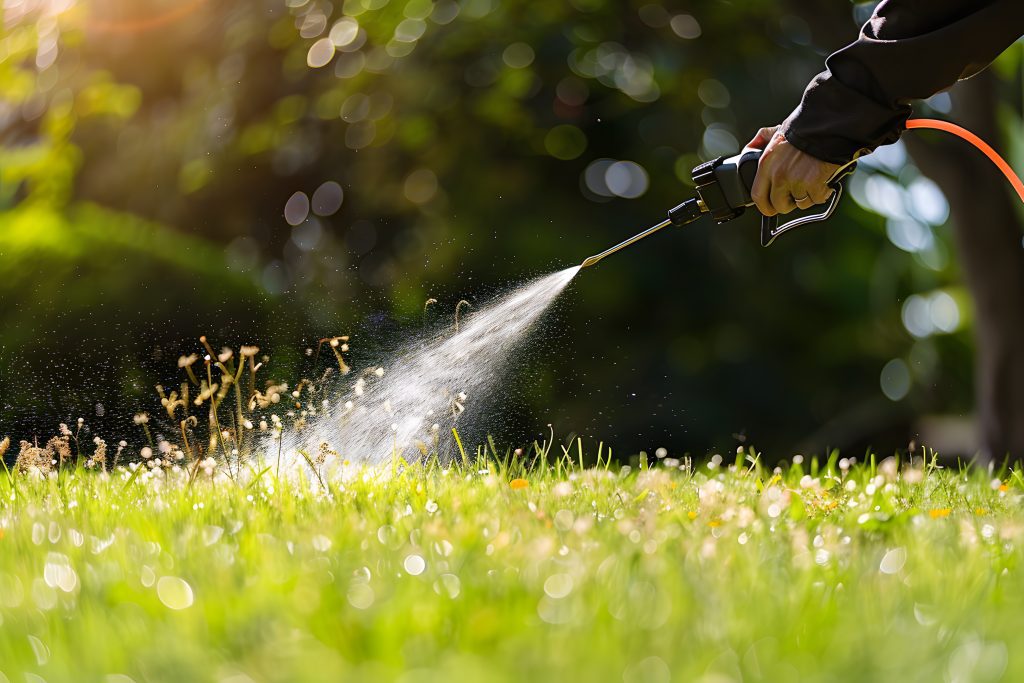When it comes to property care, you might overlook the impact weeds can have. They seem like a small issue, but left unmanaged, weeds can cause damage to structures, driveways, pathways, and landscaping; hence, there’s a need for effective weed management.
For construction professionals responsible for maintaining a property, effective weed management is more than just an aesthetic choice—it’s essential for long-term property value and functionality. Keep on reading to learn more.
1 To Protect The Structural Integrity Of Your Property
While they might seem harmless, weeds can threaten the very structures you’ve worked to build. This is a universal truth – whether you’re located in Canada and beyond. Certain invasive plants grow roots that spread quickly, squeezing through cracks in concrete or asphalt. Over time, these roots can expand, widening cracks and compromising the integrity of sidewalks, driveways, and even foundation walls.
The solution? Regularly inspect areas with concrete and asphalt and apply appropriate weed management techniques to prevent cracks from widening. And if you need professional guidance, you can partner with Edmonton weed management companies or any weed infestation experts in your city. They’re trained in providing construction professionals like yourself with the best weed management strategies.
2 To Reduce Property Maintenance Costs
Weeds can wreak havoc on your budget by increasing maintenance costs. The root systems of many weeds expand aggressively, disrupting sidewalks, paving stones, and retaining walls. As these plants push through, they cause lifting, cracking, and crumbling in hard surfaces, demanding frequent repairs and replacement. Thus, you need to establish a routine weed control program to address these issues early, saving you money in the long run.
3 To Improve Property Aesthetics
A well-maintained property reflects positively on the construction and maintenance teams responsible for it. When weeds take over, they create an unkempt appearance that detracts from the professional image you aim to uphold. Clients and visitors quickly notice whether a space is well-maintained or not, and a weed-filled property sends the wrong message.
Incorporate weed control into your maintenance schedule to keep the property looking pristine. This extra step in maintaining appearances boosts curb appeal and signals a commitment to quality work.
4 To Prevent Fire Hazards
Dry weeds pose a significant fire risk, particularly in areas prone to hot, dry weather. During summer, unmaintained weeds dry out, becoming highly flammable. A small spark from equipment, or even a cigarette, can ignite these weeds, creating dangerous fires that can spread to nearby buildings and landscaping.
To address that, clear out weeds regularly, especially during dry months. Consider replacing weed-prone areas with low-maintenance ground covers that don’t pose the same risk.
5 To Promote A Healthier Landscape
Weeds don’t just pop up in vacant lots—they also infiltrate landscapes with lawns, gardens, and flowerbeds. These invasive plants compete with desirable plants for sunlight, nutrients, and water, stunting growth and potentially killing off grass and garden plants. Over time, this imbalance harms the appearance and health of the entire landscape. As part of your weed management program, utilize appropriate herbicides and maintain a healthy lawn or ground cover.

6 To Prevent Soil Erosion
Many weeds have shallow root systems that don’t anchor soil effectively. In erosion-prone areas, allowing weeds to grow unchecked can lead to soil erosion. When rain or irrigation hits areas with poor root systems, the soil washes away, creating divots, ditches, and unstable ground that becomes hazardous for construction equipment and workers.
As a solution, plant erosion-resistant ground covers or low-maintenance grasses to replace weedy areas. These options have deeper root systems that keep soil in place, preventing erosion as part of your integrated weed management efforts.
7 To Maintain Safe Work Conditions
Weeds can create several hazards in a work environment, from concealing sharp objects to creating slippery surfaces when wet. In addition, tall or dense weeds can hide uneven ground, making it easy for someone to trip or stumble. Managing weeds is a key part of maintaining safe conditions, especially on sites that require heavy equipment and foot traffic.
To proceed, regularly clear weedy areas around paths, walkways, and driveways. This practice improves visibility, reduces tripping hazards, and helps workers and clients move around the site safely.
8 To Control Pest Infiltrations
Many pests thrive in weedy environments, where they find food, shelter, and shade. Rodents, insects, and other pests use weeds as hiding spots and entry points into buildings, posing health risks and damaging property. Left unchecked, these pests can multiply, making the property harder to maintain and leading to more serious infestations.
Moving forward, carry out weed control to prevent pest habitats. This simple step keeps pests at bay and protects the property from the damage and health risks they can bring.
9 To Follow Local Zoning Rules And Pest Management Regulations
Many cities and counties have regulations that require properties to maintain a certain level of weed control, particularly if the area is prone to fires or pest infestations. Non-compliance can lead to fines and penalties, which quickly add up and affect your bottom line.
Familiarize yourself with local ordinances on property maintenance and include weed control in your regular routine. Staying compliant keeps you on the right side of the law and avoids unnecessary financial setbacks.
Closing Words
Indeed, effective weed management is an essential aspect of preserving the property you’ve worked to build and maintain. By staying proactive about weed control, you’re not only preventing immediate issues but also safeguarding the property’s future value and appearance. It’s about protecting your work, your budget, and ultimately your professional reputation.





